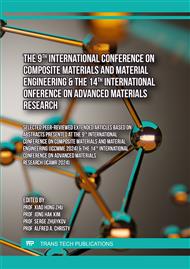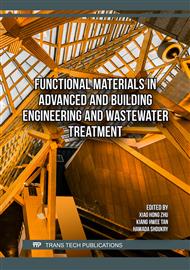
The determination of minimum performance criteria for residential buildings has encouraged the development of new technologies by companies linked to the construction industry. In this context, the acoustic performance of floor systems is of great importance. One of the solutions to improve the performance of these systems is the incorporation of lightweight aggregates to replace natural fine aggregates in the subfloor mortars, with the aim of attenuating the noise caused by impact, thus improving acoustic performance. Therefore, the objective of this study was to analyze the properties of a subfloor mortar in a 1:4 ratio (cement:sand), with the incorporation of silicone mold residue, replacing natural fine aggregate, in proportions of 10%, 20%, and 30%. %, and a water/cement ratio (w/c) of 0.93. Tests were performed in the fresh and hardened state, such as incorporated air content, mass density, consistency index, flexural tensile strength, compressive strength, water absorption by capillarity, in addition to a specific test to determine the difference in sound pressure level between specimens. The results indicated that the mortar consistency was influenced by the incorporation of waste, increasing with its incorporation. The increase in consistency positively influenced the mechanical resistance of the mortars, which showed an increase with higher residue content, due to the reduction in the amount of voids. Consequently, densities also increased with high waste content. The acoustic test showed satisfactory results, with good attenuation of 10%, indicating an 8 dB improvement in the sound pressure level. The results presented show that the residue has great potential for acoustic attenuation.
You might also be interested in these eBooks
Info:
© 2024 Trans Tech Publications Ltd. All Rights Reserved
[1]
John V M and Rocha J C 2003 Utilization of Waste in Housing Construction (Porto Alegre: ANTAC)
Google Scholar
[2]
Brazilian Technical Standards Association 2013 NBR 15575-3: Residential Buildings – Performance. Part 3: Requirements for Floor Systems (Rio de Janeiro: ABNT)
Google Scholar
[3]
Bistafa S R 2006 Acoustics Applied to Noise Control (São Paulo: Edgard Blucher)
Google Scholar
[4]
Gerges S N Y 2000 Noise: Fundamentals and Control (Florianópolis: NR Publisher)
Google Scholar
[5]
Valle S 2009 Practical Acoustics Manual (Rio de Janeiro: Música & Tecnologia)
Google Scholar
[6]
Brazilian Technical Standards Association 2023 NBR 13281: Inorganinc Mortars – Requirements and Test Methods. Part 2: Mortars for Laying and Mortars for Fixing Masonry (Rio de Janeiro: ABNT)
Google Scholar
[7]
Flach F 2012 Investigation of the Sound Absorption Potential of Mortar Composites with Recycled Materials (São Leopoldo: Unisinos)
Google Scholar
[8]
Borges J G K 2015 Analysis of the Acoustic Properties of Subfloors Made with Recycled Materials (São Leopoldo: Unisinos)
Google Scholar
[9]
Brazilian Technical Standards Association 2022 NBR 17054: Aggregates – Determination of Granulometric Composition – Test Method (Rio de Janeiro: ABNT)
Google Scholar
[10]
Brazilian Technical Standards Association 2021 NBR 16972: Aggregates – Determination of the Unit Weight and Air-void Contents (Rio de Janeiro: ABNT)
Google Scholar
[11]
Brazilian Technical Standards Association 2021 NBR 16916: Fine Aggregates – Determination of Density and Water Absorption (Rio de Janeiro: ABNT)
Google Scholar
[12]
Franz L E 2017 Analysis of the Feasibility of Using Crushed PET Bottles to Replace Natural Aggregate in Mortars (Novo Hamburgo: Feevale)
Google Scholar
[13]
Mansur A A P 2007 Physicochemical Adhesion Mechanisms at the Modified Interface with Polymer/Ceramic Coating (Belo Horizonte: UFMG)
Google Scholar
[14]
Pandolfelli V C et al. 2000 Particle Dispersion and Packaging: Principles and Applications in Ceramic Processing (São Paulo: Fazendo Arte Publisher)
Google Scholar
[15]
Metz D C 2011 Analysis of the Influence of Grain Shape on Mortar Properties (São Leopoldo: Unisinos)
Google Scholar
[16]
Kroeff L A R 2016 Evaluation of EVA and PU-Coated Textile Waste as Lightweight Aggregates in Portland Cement-Based Matrices (Novo Hamburgo: Feevale)
Google Scholar



